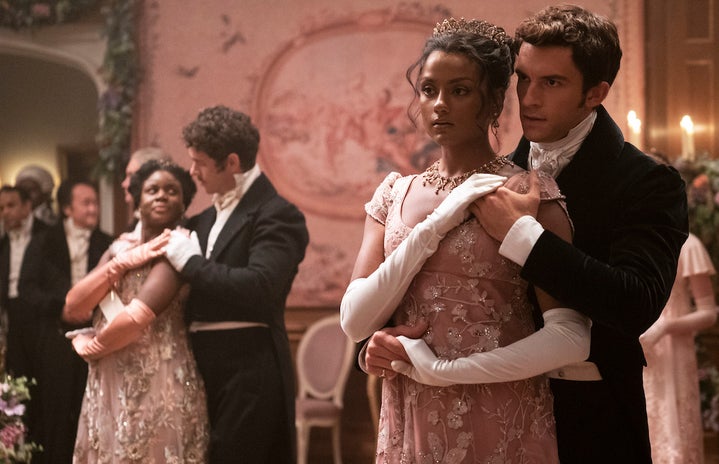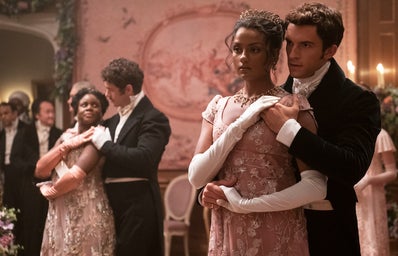Official Spoiler Warning: there are mild spoilers ahead. Read at your own risk.
Like nearly everyone else I know, I mostly ignored my responsibilities to catch up on the second season of Bridgerton last week. Homework took a back seat for a couple of days while I let myself sink into the overly indulgent Regency England world of the show.
Going into it, I knew the lead of the season was a South Asian actress, having seen the news of Simone Ashley’s casting, who I was familiar with from another fantastic Netflix show, Sex Education. That was the extent of my knowledge because I hadn’t seen any trailers or images from the season. Everything was novel to me, including the details about the season’s central storyline. This season’s romantic lead, Kate Sharma, struggles to fulfill the responsibilities she has appointed herself. Kate wants the best for her sister and mother, even at great personal cost to herself. Similarly, Anthony Bridgerton, who we first met in the first season, played by Jonathan Bailey, has a similar trajectory of trying to live up to his role as the oldest son and head of the family. This conflict between what each of them want and what they feel they must do is at the heart of this season.
I did not expect a show like Bridgerton to exact much of an emotional response from me. I enjoy the show, but I was not particularly moved by it during season one. Season two, however, made this brown girl feel seen in many ways. It is a near universal brown daughter experience, particularly the eldest daughter, to feel a sense of responsibility towards their family, to strive towards an impossible standard because they feel it is their duty. When you’re the eldest daughter, you live with a keen awareness of the expectations you must live up to and an even keener fear of failing to meet them. Such is the burden of eldest daughters. I would know.
In the season finale, Lady Mary tells Kate, “You owed me nothing. You never had to earn your place in this family. I loved you from the day I met you. Oh, love is not something that is ever owed.” She disputes the idea that love is transactional, and she dispels Kate’s insecurities over how she fit into a family to which she felt she had no inherent claim despite her strong love for it. This one exchange between Lady Mary and Kate had my tears flowing, because for once I was seeing an internal conflict I often struggle with, not only portrayed but resolved. I got to see a brown daughter loved and accepted unconditionally and protected fiercely. For once, I saw a character who not only shared my dark skin but shared my lived experience in some way, go on to get the happy ending she deserved.
I do not mean to suggest Kate and the Sharmas in general are perfect representations of brown, specifically Indian women. The many cultural and historical layers that can inform a character’s personality and motivations did not necessarily get fleshed out in the season. There were efforts to incorporate the Sharmas’ cultural background beyond just appearance. The terms “amma” and “appa” that Kate uses to refer her parents are Tamil, a language spoken by Tamil communities in South and Southeast Asia, and a nod to Simone Ashley’s parents and culture. The term “didi” Edwina uses for Kate is used to refer to elder sisters in Hindi, the most commonly used language in India. Anthony uses Kate’s full birth name “Kathani” during the last episode when confessing his love rather than the Anglicized version. Of course, the most noteworthy example, the inclusion of the “Haldi” ceremony, a holy pre-wedding ritual, in episode six. Some of these I appreciated, while some even I could see did not add up, though I’m sure my Indian peers can point to the many holes within those references better than I can. However, the show did a very good job of addressing the way daughters are born with responsibility on their shoulders, of the way familial love seems conditional in this context. That, more than anything, earned this season my respect.
To all my fellow brown girls, whether eldest daughters or not, whether dark-skinned or not, who saw pieces of themselves reflected in Kate Sharma, I hope this season brought you the joy and the excitement it did me. May we all get to see more of ourselves reflected in the media we enjoy. May we all get to see more brown girls get their time in the sun.


